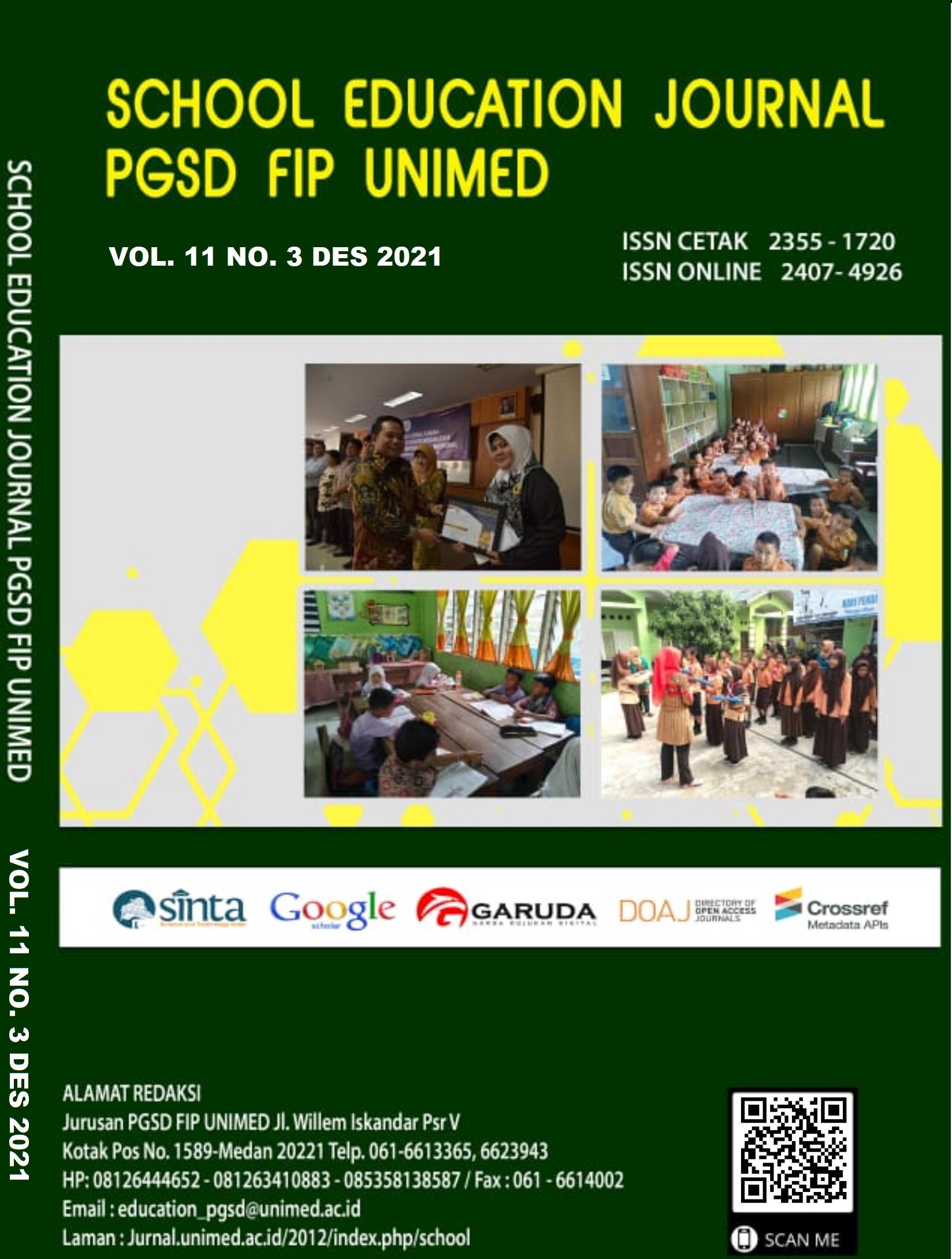PENGEMBANGAN MODEL TEACHING PERSONALITY AND SOSIAL RESPONBILITY (TPSR) MATA KULIAH PENDIDIKAN JASMANI SEKOLAH DASAR
DOI:
https://doi.org/10.24114/sejpgsd.v12i3.40754Keywords:
Development, Model, TPSR (Teaching Personality and Social Responsibility), Physical Education, Elementary School.Abstract
Essential investigate targets are: To deliver a item Advancement Demonstrate Educating Identity And Social Duty (TPSR) within the Subject of Physical Instruction in Basic Schools that are substantial. The investigate method employments a 4-D show which is an expansion of Characterize, Plan, Advancement and Spread. The area of the research was carried out within the Essential School Educator Instruction Think about Program, FIP UNIMED. The populace of this investigate is all understudies of the Stambuk Rudimentary School Educator Instruction Consider Program 2020 totaling 225 individuals. The investigate test was arbitrarily doled out to classes, specifically lesson J Customary 2020 totaling 23 understudies. Information collection methods in this think about utilized interviews, surveys and documentation. The comes about of the advancement of the Educating Identity And Social Obligation (TPSR) Show Improvement were gotten (1) The comes about of the fabric master approval as a entire appeared that the Advancement of the Educating Identity And Social Obligation (TPSR) Demonstrate was expressed to be exceptionally substantial (96%) and the comes about of the media master approval as a entire were expressed to be exceptionally substantial (93.3%) (2) The comes about of the adequacy test have an normal esteem of 77,391 with the completeness criteria "Total". The conclusion of the investigate is that the Advancement of the Instructing Identity and Social Duty (TPSR) demonstrate is substantial and viable for utilize within the Physical Instruction Course for Basic School Instructors of Rudimentary School Instructor Instruction Staff of Instruction, State College of Medan.References
Bailey, R. 2009. The Educational Benefits Claimed for Physical Education and School Sport: an Academic Review. Research Paper in Education. Research Paper in Education, 24(1), 1“27.
Damopolii, V., Nursiya, B., & Resmawan. 2019. Efektivitas Media Pembelajaran Berbasis Multimedia pada Materi Segiempat. Jurnal AJME, 1(2), 74“85.
Gaol, L., & Rumiris. 2022. Analisis Efektivitas Perkuliahan Daring Mahasiswa Fakultas Keguruan dan Ilmu Pendidikan Universitas Katolik Santo Thomas. School Education Journal, 12(2). https://doi.org/https://doi.org/10.24114/sejpgsd.v12i2.34640.
Hellison, D. 2003. Teach WILD Aing Responsibility Trough Physical Activity. Chicago: Human Kinetics, University of Illinois at Chicago.
Prakoso, S. 2022. Metode Normative Survey Dalam Analisa Dampak Penerapan Kegiatan MBKM. School Education Journal, vol. 12(1), doi: https://doi.org/https://doi.org/10.24114/sejpgsd.v12i1.32895.
Ramadhan, I. 2017. Pengembangan Model Pembelajaran Gerak Dasar Manipulatif Pada Siswa Kelas V Sekolah Dasar. Medan: Semnas. STOK Bina Guna Medan.
Rosdiani, D. 2013. Model Pembelajaran Langsung Dalam Pendidikan Jasmani Dan Kesehatan. Bandung: Alfabeta.
Sudjana, N. 2012. Penelitian Hasil Proses Belajar Mengajar. Bandung: Remaja Rosda Karya.
Sukoco, A. S. 2014. Hubungan Sense of Humor Dengan Stres Pada Mahasiswa Baru Fakultas Psikologi. Jurnal Ilmiah Mahasiswa Universitas Surabaya, halaman 1“10. https://journal.ubaya.ac.id/index.php/jimus/article/view/1517.
Downloads
Published
Issue
Section
License
Authors whose manuscripts are approved are approved as follows:
The publication rights for all journal manuscript materials published/published on the SEJ (School Education Journal) E-Journal site are held by the editorial board with the author's knowledge (moral rights remain with the manuscript authors).
The formal legal requirements for accessing this electronic digital journal article are subject to the terms of the Creative Commons Attribution-ShareAlike (CC BY) license, which means that E-Journal SEJ (School Education Journal) has the right to store, transfer media/format, manage in the form of a database, maintain, and publish articles without asking permission from the author as long as the author's name remains as the copyright owner.
Manuscripts published/published electronically are open access for educational, research, and library purposes.

